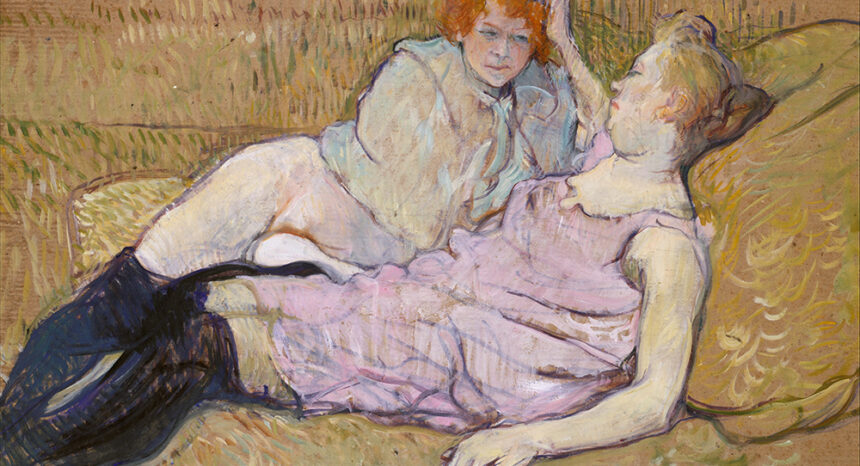Proponents of legalizing prostitution argue that by regulating the flesh trade, sex workers are better protected. If the trade is underground, academics have shown, prostitutes are more vulnerable to abuse, exploitation and trafficking.
A forthcoming paper offers another argument for legalization and regulation: lower rates of rape and sexual assault in Dutch cities where sex is sold legally.
An academic study worth reading: “Street Prostitution Zones and Crime,” in the American Economic Journal, forthcoming. (A draft version of the paper is available here.)
Study summary: A team lead by Paul Bisschop of SEO Amsterdam Economics, a public research institute in The Netherlands, enquires if dedicated prostitution zones affect crime and sexual violence in Dutch cities. Known as “tippelzones,” after the Dutch word for street walking, in these areas soliciting and purchasing sex is legal during certain hours. Often on the edge of cities, tippelzones should not be confused with red-light districts.
Bisschop and his team compare crime data for nine Dutch cities with tippelzones and 16 cities without. The data from 1994 to 2011 include measures of sexual, drug-related and violent crime. The authors also use nationwide survey data collected between 1993 and 2006 to determine how tippelzones impact perceptions of crime.
The authors begin with the premise that tippelzones – which are often opened in response to resident complaints about the unchecked spread of prostitution – are loci for other types of delinquency, including drug trafficking and organized crime. (Indeed, street prostitutes in Holland are more likely to use drugs than individuals in the wider population, a European Union paper found.) But, Bisschop and his colleagues add, “police monitoring is higher in tippelzones than in other areas of the city so criminals of all types – sex traffickers, pimps, drug dealers, violent clients – must trade off their willingness to operate in the tippelzone with the higher risk of apprehension.”
Some Dutch cities with tippelzones add an extra layer of monitoring by requiring sex workers to operate with a government license.
Though several Dutch tippelzones have closed in recent years due to complaints from residents about sex workers fighting, tippelzones have spread across the continent to Germany, Switzerland, Italy and England.
Key takeaways:
- The authors provide “causal evidence” of a 32 to 40 percent reduction in rape and sexual abuse within two years of a city opening a tippelzone. The higher number is for cities that license sex work in the tippelzone; the lower figure is for cities without a licensing process. “The decreases in sexual abuse are stronger in cities with licensed tippelzones.”
- These gains fade over time.
- Without precise data on the victims of sexual violence, it is not possible to determine exactly how the number of rapes and cases of sexual abuse fall in the population at large. Some victims are sex workers. But the authors believe the tippelzones lead “to a decrease in sexual violence on women more generally by providing an anonymous, appealing and easily accessible outlet for sex to otherwise violent individuals.”
- When licensing is introduced after a tippelzone is established, it increases instances of sexual abuse and rape. This happens because, at first, the tippelzone attracts foreign prostitutes with dubious legal status. When they suddenly need licensing, many leave for “less controlled environments.”
- Still, in a survey the authors cite, “95 percent of the interviewed prostitutes report feeling safer within the tippelzone.”
- In cities with both a tippelzone and a licensing requirement, the authors find a 25 percent reduction in drug-related crimes within two years. That result persists beyond two years.
- The authors do not find a relationship between tippelzones and weapons crimes or violent assaults.
- As for perceptions, residents living near a tippelzone without a licensing system believe the tippelzone increases drug-related crime by 6 percent.
- In cities where licensing requirements for sex workers are introduced at the same time as tippelzones, perceptions of drug-related crime fall across the city as a whole, though the perceptions rise slightly in areas near the tippelzones.
Helpful resources:
- The International Labor Organization (ILO), an agency of the United Nations, campaigns against child labor and sex trafficking. It publishes some benchmark reports, such as this 2012 paper estimating forced labor globally, and this 2014 paper on the economics of forced labor.
- The International Organization on Migration (IOM), also a UN agency, researches human trafficking and sex trafficking.
- The International Committee on the Rights of Sex Workers in Europe, founded by a group of Dutch sex workers in 2002, campaigns for the rights of sex workers and against human trafficking.
- ProCon.org, a non-profit that collates information on controversial issues, details 100 countries’ laws on prostitution, brothels and pimping.
Other research:
- A 2014 paper for the National Bureau of Economic Research showed that decriminalizing indoor prostitution in Rhode Island “caused both forcible rape offenses and gonorrhea incidence to decline for the overall population.”
- A 2013 working paper for the Research Institute of Industrial Economics in Sweden argues that the legalization of prostitution without regulation can encourage the spread of sex trafficking.
- This 2016 book edited by several British academics is a collection of research on how cities respond to street prostitution.
- This 2004 presentation outlines the history of Dutch tippelzones and the thought process behind Amsterdam’s 2003 decision to shut its zone.


Expert Commentary